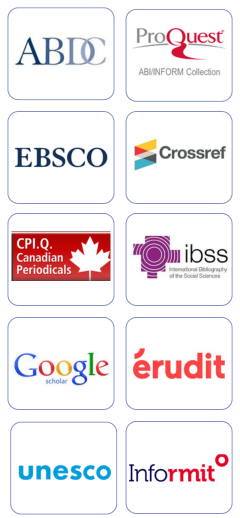Submissions
Submission Preparation Checklist
As part of the submission process, authors are required to check off their submission's compliance with all of the following items, and submissions may be returned to authors that do not adhere to these guidelines.- The submission has not been previously published, nor is it before another journal for consideration (or an explanation has been provided in Comments to the Editor).
- The submission file is in OpenOffice, Microsoft Word document file format.
- Where available, URLs for the references have been provided.
- The text is single-spaced; uses a 12-point font; employs italics, rather than underlining (except with URL addresses); and all illustrations, figures, and tables are placed within the text at the appropriate points, rather than at the end.
- The text adheres to the stylistic and bibliographic requirements outlined in the Author Guidelines.
Copyright Notice
Papers accepted become the copyright of the journal, unless otherwise specifically agreed.
Privacy Statement
The names and email addresses entered in the JCIMsite will be used exclusively for the stated purposes of this journal and will not be made available for any other purpose or to any other party. The data collected from registered and non-registered users of this journal falls within the scope of the standard functioning of peer-reviewed journals. The journal’s editorial team collects such information only insofar as is necessary or appropriate to fulfill the purpose of the visitor’s interaction with the journal. It includes information that makes communication possible for the editorial process; it is used to inform readers about the authorship and editing of content and it enables collecting aggregated data on readership behaviors. Data that will assist in developing this publishing platform may be shared with its developer Public Knowledge Project in an anonymized and aggregated form, with appropriate exceptions such as article metrics. The data will not be sold by this journal or PKP nor will it be used for purposes other than those stated here. The authors published in this journal are responsible for the human subject data that figures in the research reported here. Those involved in editing this journal seek to be compliant with industry standards for data privacy, including the European Union’s General Data Protection Regulation (GDPR) provision for “data subject rights” that include (a) breach notification; (b) right of access; (c) the right to be forgotten; (d) data portability; and (e) privacy by design. The GDPR also allows for the recognition of “the public interest in the availability of the data,” which has a particular saliency for those involved in maintaining, with the greatest integrity possible, the public record of scholarly publishing.
Users registered in any capacity with the journal can edit their personal data and notification settings by clicking View Profile in the upper right corner of the screen. To close an account, please contact veronica.svard@openacademia.net



